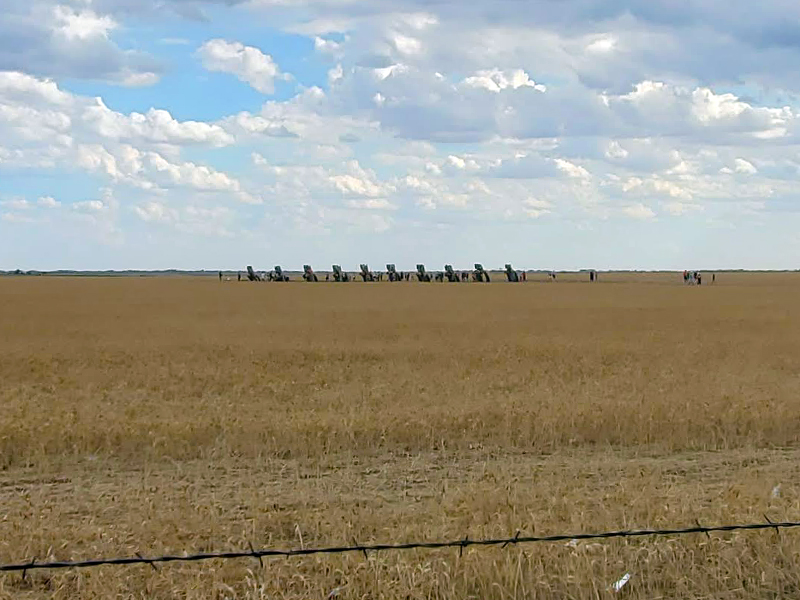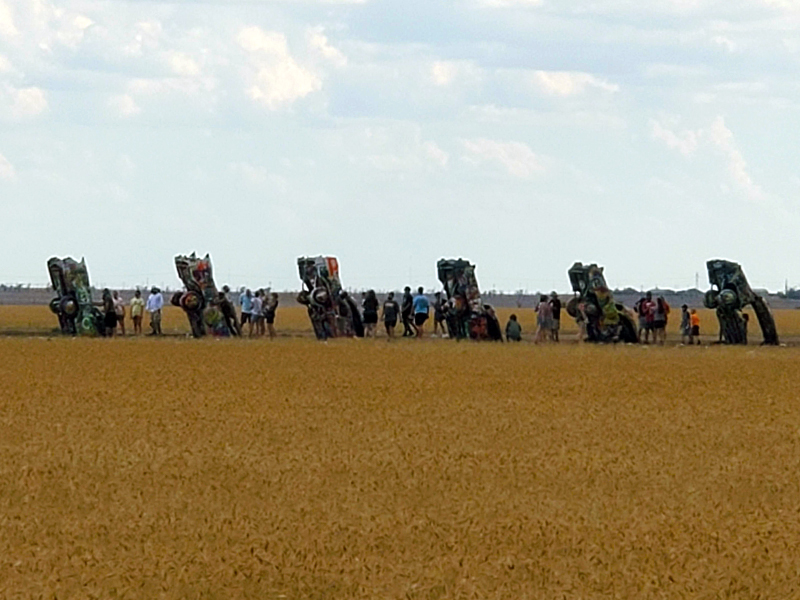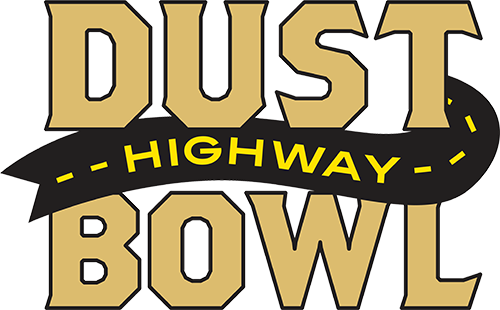
In the windswept vastness of the Texas Panhandle, where the sky stretches out like an unending canvas, there lies a surreal spectacle: ten Cadillacs, half-buried nose-first in a farmer’s field. This is no mere automobile cemetery. This is art, anarchy, and quintessentially American — it’s Cadillac Ranch. A remarkable fusion of capitalism and counter-culture, it serves as a perpetual monument to the audacity of human creativity and the ever-changing landscape of public art.

The installation came to life through an unlikely alliance between Amarillo billionaire Stanley Marsh 3 and a group of avant-garde artists from San Francisco, collectively known as The Ant Farm. Marsh sought a piece of public art that would puzzle and intrigue the local populace. In 1974, The Ant Farm executed this vision by embedding a lineup of Cadillacs, ranging from the 1949 Club Sedan to the 1963 Sedan de Ville, into the Texas soil. Arranged at the same angle as the Great Pyramid of Giza, their tail fins reach skyward like the sails of a buried fleet, evoking echoes of ancient monuments.
From its inception, Cadillac Ranch encouraged public interaction, even inviting what many would consider vandalism. Travelers would detour off the highway to witness this remarkable spectacle and, in doing so, often leave their mark—sometimes with spray paint, sometimes by removing pieces of the cars, thus contributing to their ongoing transformation.

Now, decades later, these Cadillacs have been earthbound for longer than they were ever road-bound. Stripped to their skeletal frames and covered in a vibrant array of graffiti, they stand as aging icons in the midst of continual reinvention. The Ranch has evolved into a pilgrimage site for those journeying along the legendary Route 66. The scent of spray paint fills the air, serving as a modern-day incense, while the medley of languages spoken makes the site a crossroads of global cultures.
Despite the openness of the landscape, the Ranch offers its visitors a unique sense of privacy and freedom. Individuals find their own space, take a stance, and unleash their creativity with cans of spray paint in hand. This sense of individual expression seems to resonate particularly well with European tourists, possibly starved for an outlet since the fall of the Berlin Wall.
The most compelling aspect of Cadillac Ranch is its transient nature. Any artwork added to the cars is almost immediately covered by subsequent contributions, creating a constantly evolving tapestry of expression and change. In a digital age characterized by fleeting interactions, Cadillac Ranch stands as a tangible testament to the impermanent yet deeply impactful nature of human art and expression.
If you find yourself navigating that iconic stretch of Route 66, make the detour. Immerse yourself in this singular field that hums with the languages of the world and smells of fresh paint. Add your own layer to this uniquely American cultural collage. But bear in mind, whatever you create at Cadillac Ranch will likely be short-lived, a fleeting addition to an ever-changing canvas set against the boundless Texas sky.
The ephemeral essence of Cadillac Ranch has not only captured the imagination of travelers and artists but also permeated popular culture, most notably in Bruce Springsteen’s song “Cadillac Ranch,” featured on his 1980 album ‘The River.’ Springsteen’s lyrics encapsulate the transitory nature of life and material glory, eloquently capturing how even symbols of status and power like the Eldorado or Trans-Am are ultimately destined for the junkyard. The song serves as an auditory companion to the Ranch, reinforcing the idea that whether it’s a classic car or a human life, all things have their moment in the sun before returning to the earth. “Well buddy when I die throw my body in the back, And drive me to the junkyard in my Cadillac,” sings Springsteen, mirroring the Ranch’s own existential narrative. Like the spray-painted Cadillacs standing in the Texas soil, Springsteen’s song is a poignant reminder of the impermanence that defines our existence, and the beauty that can be found in embracing it.
